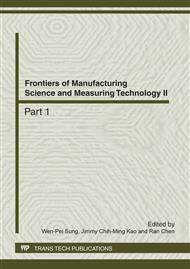p.945
p.949
p.953
p.958
p.962
p.968
p.972
p.978
p.983
Thermal Optimization on High-Power LED Street-Lighting Driver with Micro Heat Pipe
Abstract:
High-power LED street-lighting with advantages including long lifespan, great luminescent efficiency, lower power consumption and superior environmental performance has received more and more attention. However, the lifespan of corresponding LED drivers fails to match with that of LEDs. The main reason is that in tight and confined spaces, high heat flux cannot be emitted to surroundings, which lead to the increased temperature of electric devices in LED driver. In this paper, high conductive micro heat pipes (MHPs) are applied in the cooling system. Firstly, the Icepak thermal simulation software is applied in analog contours of temperature of interior driver. Then experiments are carried out to measure the temperature of electric devices of LED driver. The results indicate that internal temperature of LED driver is decreased by 5°C when MHP is applied, compared with the original thermal design. The capacitor and MOSFET which are sensitive to heat and easy to damage run under optimized temperature.
Info:
Periodical:
Pages:
962-967
Citation:
Online since:
April 2012
Authors:
Price:
Сopyright:
© 2012 Trans Tech Publications Ltd. All Rights Reserved
Share:
Citation:


